After visiting the albatross, we saw a different kind of birdlife at Penguin Place, a penguin conservation and rehabilitation center.
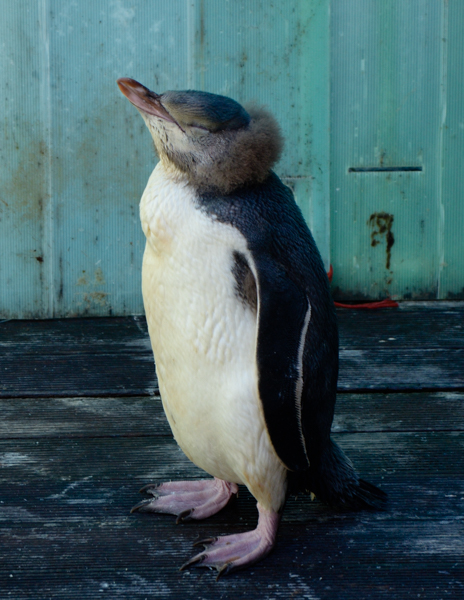
After an introductory talk, the group split into two. One went first to the breeding area. Our first stop was the rehabilitation center. Injured or sick penguins from throughout the area come here for treatment. If an adult must come in, every attempt is made to bring their young as it takes two adults working together to raise chicks. If one is injured, the babies will likely starve.
For this reason, chicks that have lost one or both parents are also brought in for care.
This youngster is just shedding the baby fluff. The fringe makes him (or her) look like a balding old man!
Yellow-eyed penguins are endangered due to habitat loss, predation, disease and starvation.
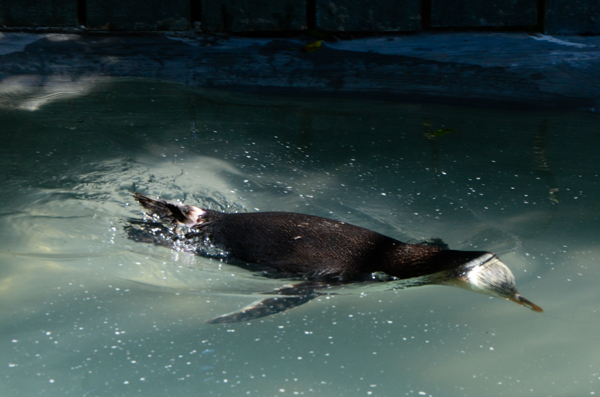
This bird was enjoying a dip in the rehabilitation center's pool.
The yellow-eyed penguin is the only surviving member of its genus. There was a sister-species known from the fossil record, but it was hunted to extinction by the Maori several hundred years ago.
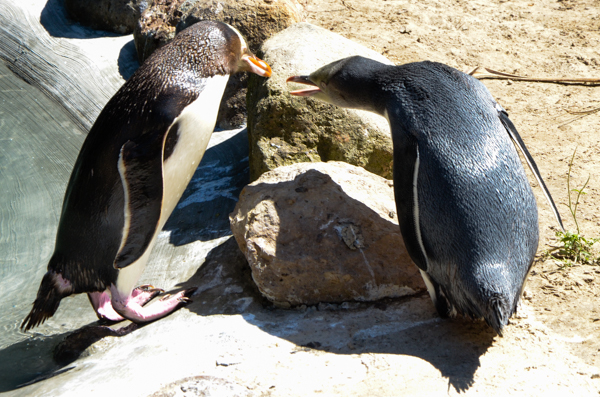
After the swimmer got out of the pool there were harsh words with a neighbor.
These birds are shy and solitary. They prefer to nest in dense forest that prevents them from seeing or hearing other penguins.
Naturalists are concerned that tourist visits disrupt the penguins enough to impact the growth of chicks. Penguin Place does all it can to minimize the impact. The research, hospital, and habitat restoration programs are funded by visitors, so there is a balancing act needed.
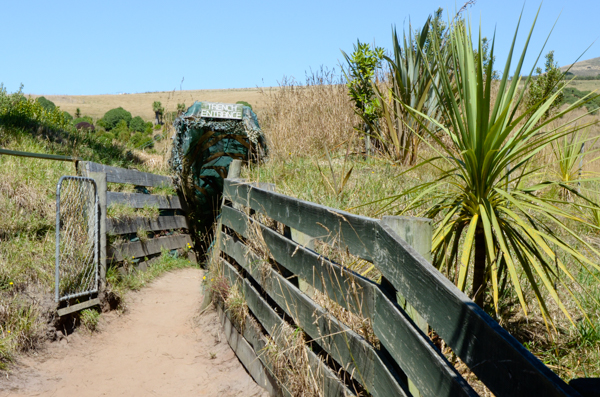
After visiting the penguin hospital, we loaded a bus for transport to the breeding area.
This land has been and remains a sheep farm. It had been cleared of most of the native bush, but is now being restored. Until the forest returns, shaded nesting sites are provided throughout the breeding area.
All viewing is done from trenches designed to limit the impact that visitors make on the birds. We were admonished not to make noise, not to use flash photography, and not to poke cameras through the sides of the trench.
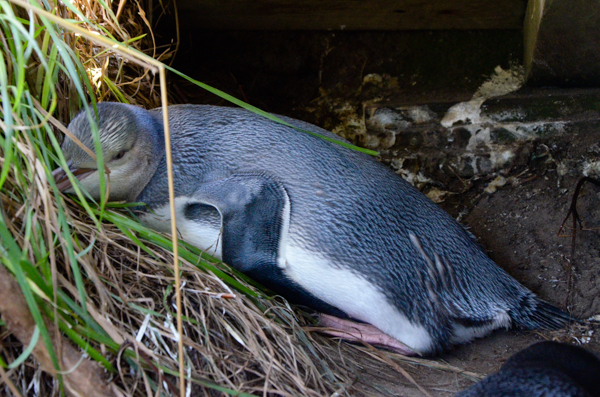
A breeding pair will lay two eggs and with luck will raise both unlike some birds who reject the weaker chick. The chicks are left alone during the day. The parents return in the evening bringing food.
This youngster is barely awake. His sibling, partially seen in the lower right, is sound asleep.
The chicks are vulnerable to predators when alone, and the parents are also vulnerable when traveling from the shore to the nesting site.
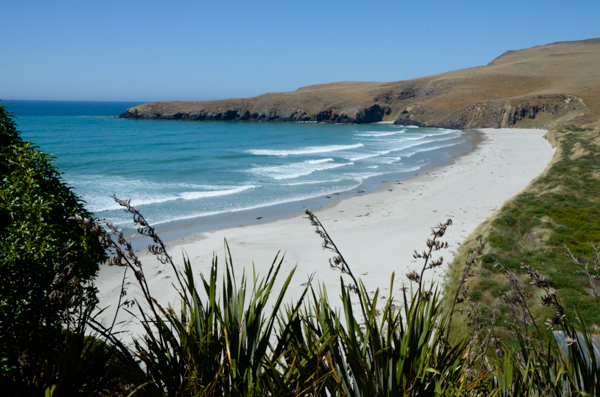
The adult penguins must traverse this exposed beach, the closest to the nesting site, scramble up into the scrub, and then make it to the wooded areas safely -- twice a day or more.
The beach is closed to visitors.
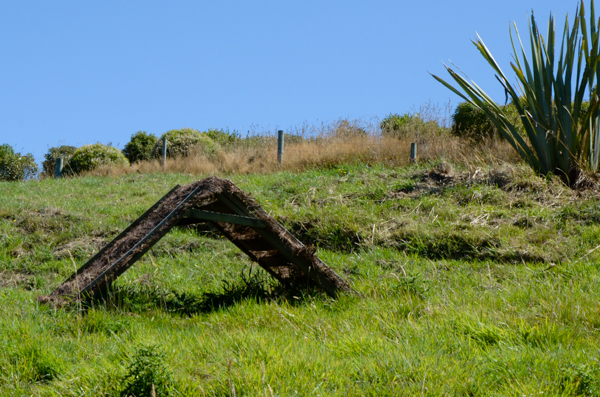
An example of the shaded nest sites that are provided for the penguins.
This one is really exposed and it doesn't look like it has been used. There is no attempt to force the penguins to use any particular site. There are a variety set up in different locations for them to pick and choose.
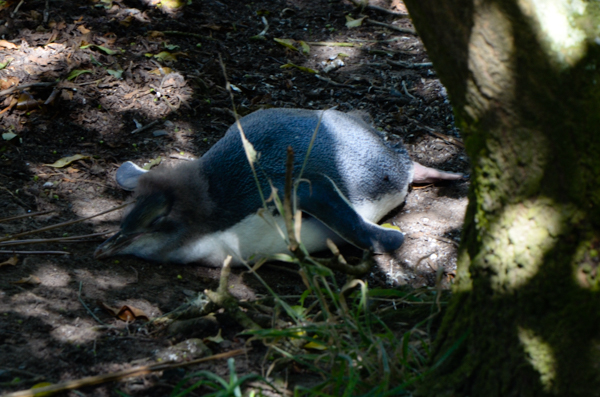
This youngster's parents found a much more natural site. We didn't see any siblings so maybe only one survived. That would explain his plumpness.
Penguin Place was the only place that we saw the rare Yellow-eyed Penguin.
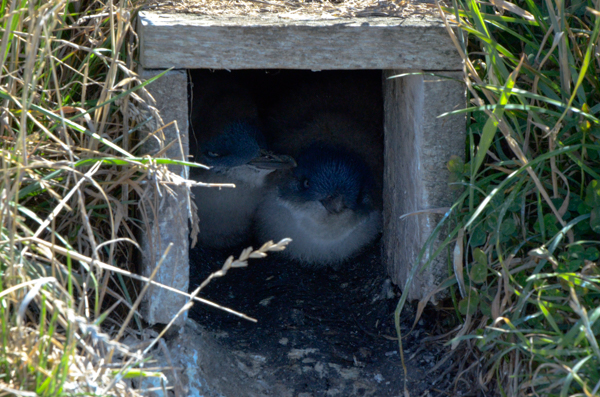
Another area of the reserve was dedicated to Blue Penguins, which are also known as Little Penguins.
These birds nest in burrows so Penguin Place has built numerous nesting holes for their convenience. Not all are occupied, but this one had a couple of chicks tucked in and enjoying the scenery.
We saw a number of Blue Penguins at sea throughout the rest of our trip.
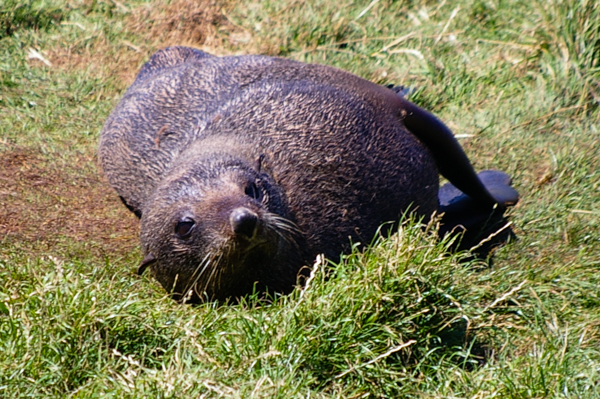
There was other wildlife on the preserve including the New Zealand Fur Seal. This individual was enjoying a snooze in the grass while his pals were playing in the nearby sea.
These are not true seals -- they are sea lions. They have external ears and can rotate their rear flippers to navigate on land. They can move surprisingly quickly. We were told that they could outrun us!
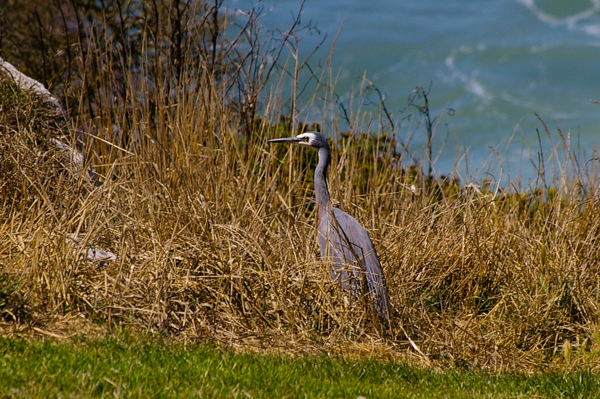
This White-Faced Heron was so still it took a while to spot it.
Another bird that we saw at Penguin Place was the New Zealand Fantail. I didn't get a picture. Even if I had, at the rate it was whizzing around it would have been just a blur!
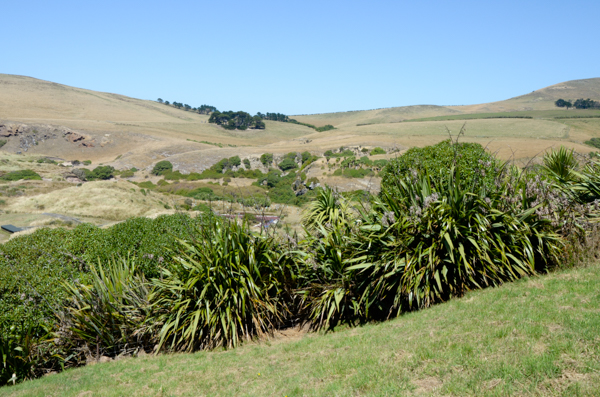
This final view of Penguin Place shows the newly restored bush areas in the midst of pastureland. There were other areas that were more recently planted than this.
Click your "back" button to return.